Russian hunting spaniel: breed characteristics and breeding

The conversation about hunting dog breeds can be continued almost endlessly. But one of the underestimated species is the Russian hunting spaniel. It is less known to a large number of people than huskies, dachshunds or greyhounds, but in fact it is not inferior to them.

Origin story
In the last quarter of the 19th century, the Russian Empire began to import cocker spaniels, but the stockiness of this breed became an almost insurmountable obstacle in organizing hunting. A new urgent task has appeared - the development of a not too demanding gun dog, which would not take up much space and be distinguished by endurance. What is symbolic, such a new breed as the Russian hunting spaniel was created at the next historical stage. In 1931, a spaniel section was created in Leningrad. It was she who became the leading center for the development of the breed.
An intermediate result was achieved by the end of the 1930s. At that time, a variety of spaniels also appeared in Moscow and Sverdlovsk. The decisive step was taken already in the post-war period. For this, they used not only the surviving livestock, but also imported the best spaniels in the world. The first breed standard in its now familiar form was approved in 1951.
After 15 years, it was slightly changed. The next edition of the standard was adopted in 2000. In the 1990s, the number of the breed declined sharply, but over the past 20 years it has begun to rise again. Now Russian hunting spaniels have firmly taken their place among hunting dogs in our country. And therefore it is important to know what they are.
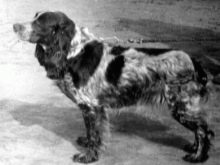
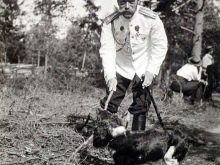
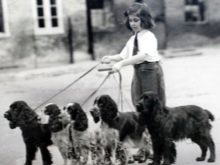
Description
When characterizing the Russian Hunting Spaniel breed dog, it should be noted that the World Cynological Association does not recognize this variety. Therefore, we have to rely on the information provided by the Russian Cynological Federation. The breed is characterized by a strong, slightly stocky build with a dry composition. The skeleton is very strong, the muscles are well developed. The rib cage is wide, deep and long.
An important feature is good development of false ribs... The withers are also well developed, the back is straight and strong. A small slope appears between the withers and loins. The lumbar part is rich in muscles, is relatively short and protrudes slightly upward. The relatively long and wide croup is muscular.
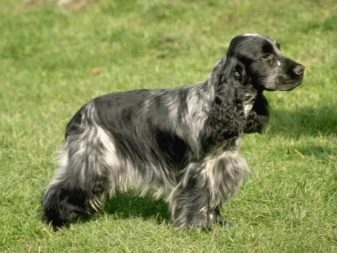
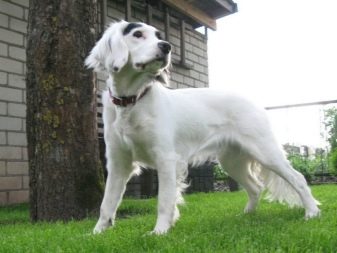
The weight of the dog is between 13 and 18 kg. The standard provides for the density and elasticity of skin that does not have folds. The head is not too long, the skull is rather wide and has an oval configuration. Such moments are characteristic:
- bulging of the forehead;
- relatively small occipital protuberance;
- pronounced superciliary arches;
- parallelism of the skull and muzzle (with a clearly visible transition between them);
- the muzzle is rather wide from above, but inferior in width to the cranium;
- some narrowing of the muzzle in the region of the nose.
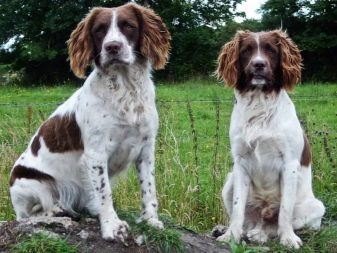

The teeth of the Russian spaniel are strong and well developed. A scissor bite and a tight overlap of the upper jaw of the lower jaw are two of their characteristic features. Spaniels have large oval eyes. In most cases, the eyes are brown (dark or light). Eye color usually matches coat color.
The ears of the hunting spaniel are pendulous, long and rounded at the ends. They are planted either along the eye line or above it. Ears are flat against the cheekbones. The neck is set low, the forelegs are dry and parallel. The shoulder joints are angled approximately 100 degrees (with elbows back and forearms straight).
The Russian hunting spaniel has straight, parallel hind legs. They are spread wider than the front legs. The oblique setting of the short shins is also characteristic. The dog moves easily and freely. Its rounded paws have tightly knitted toes. The tail is thick at the very beginning, docked by about 50%.
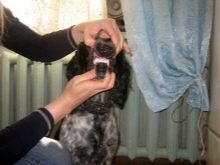
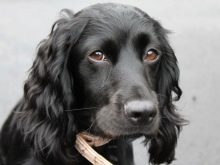
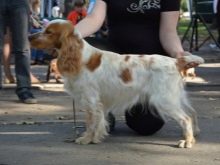
The coat of the Russian hunting spaniel is long and soft, tight to the surface of the body. The head and legs are covered with rather short hair. On the neck, on the back and on the sides, it is longer and thicker. There are several colors typical for the breed. Single color means either the absence of white markings, or their presence in strictly defined areas, such as:
- muzzle;
- forehead;
- throat;
- breast;
- stomach;
- tip of the tail;
- paws.
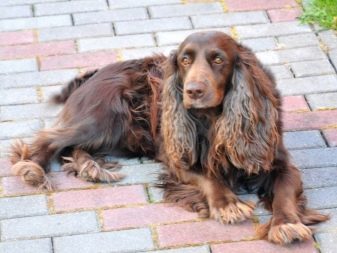
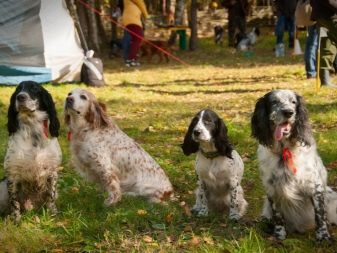
The black color is accompanied by the appearance of a smooth and straight coat. A brown tone is found when there is no black pigment in the coat. Usually the eyes and nose are brown. This color is characterized by a long and thick coat. The head is covered with a kind of dense cap, the back and limbs are also covered with dense wool.

The red spaniel can actually come in a wide variety of colors, from light fawn to dark red. The nose of such a dog is black or brown, and the eyes are only dark brown in color. Bicolor (piebald) representatives of the breed can have 9 different color variations (taking into account speck and tan). For greater convenience, it is customary to divide piebald into two types - contrasting and speckled; both are white at birth with large markings. It is possible to identify the presence of specks in the future by the pigmented areas on the nose and on the pads of the paws.

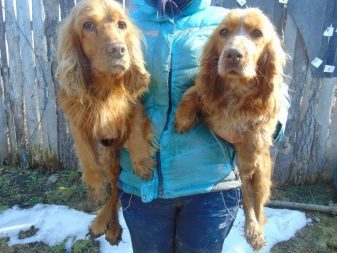
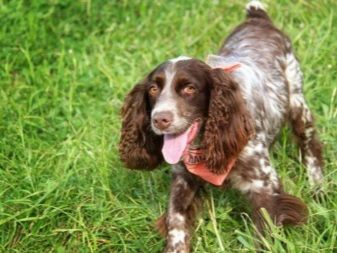
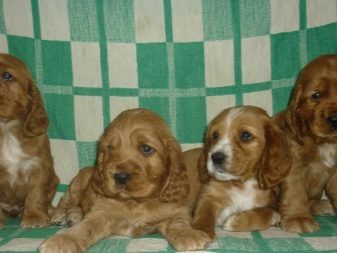
Spot recognition is possible even at the age of 1 month.The final color is drawn up by 6-7 months. The speckled feature dominates the contrast. It is impossible to get speckled offspring from two contrasting dogs. There is also a tricolor type of hunting spaniel.
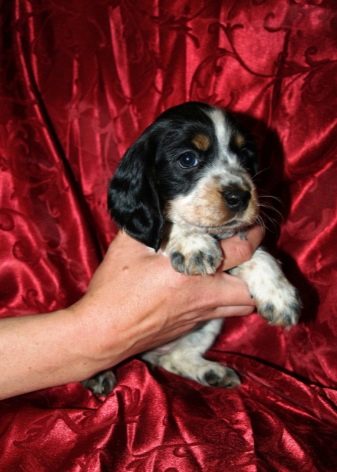
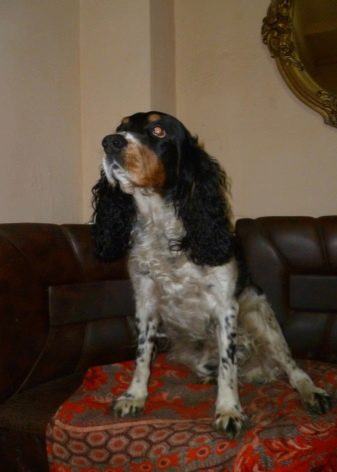
Character and behavior
ROS is distinguished by its cheerfulness, poise and tranquility. It is believed that he is persistent and energetic enough to participate in the hunt. Spaniels are not inclined to give up until they find and deliver their prey. They are constantly moving, and even during a normal walk they must move continuously, as if looking for prey. At the same time, their reaction to any sounds and smells is very pronounced.
Good coexistence with other pets is characteristic.... There are no examples when a dog would chase chickens, geese, pigs. However, this positive property manifests itself only with a competent approach. No matter how funny the playful behavior of babies may seem, its consolidation in adulthood will cause a lot of problems. The skill of finding and serving game can be used in ball and stick games.
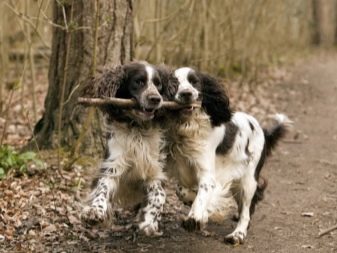
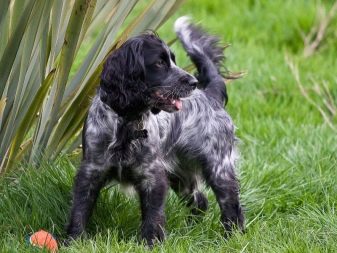
Russian hunting spaniels can hunt for 4-5 days in a row. An attractive feature of the breed is its excellent swimming performance. Only a few larger dogs will surpass the spaniel in swimming. But this is compensated by perseverance and diligence. Experts advise to practice hunting skills in catching marsh and field birds, which will reveal all the main advantages of the breed.
ROS can walk along with the owners along the shore after the end of the departure of ducks. Therefore, his "working day" is longer than that of other four-legged hunters. A dog that has achieved great skill will be able to hunt such cautious birds as capercaillie and black grouse. Effective actions of ROS in hunting are largely related to its physiological characteristics. Smooth (compared to other spaniels) coat avoids clogging with seeds of marsh and meadow plants (although some of them will stick anyway).
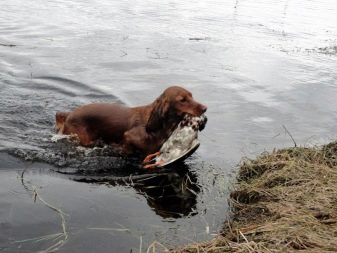
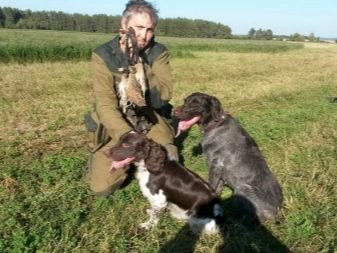
Hunting behavior - searching for prey, reaction to its take-off, reaction to shooting, delivery of the killed birds to the owners, they have about the same as that of the English cockers. High legs increase efficiency in swamps and in the middle of hummocks. The elongated, in comparison with the "English", the lumbar spine contributes to the development of saving strength of the creeping gallop. Dry eyelids are not clogged or injured by various seeds sticking out of the grass.
Any spaniel tries to immediately deliver all fallen birds to the owner. It doesn't matter to him which of the hunters shot the prey. It should be borne in mind that even very diligent actions of a dog cannot always compensate for the difficulties of hunting. In a ford duck exit, when there are dense thickets or swampy areas of the coast, it is advisable to give preference to huskies or continental cops. It must be remembered that the ROS's passion and passion for hunting can lead to sad consequences for the dog.
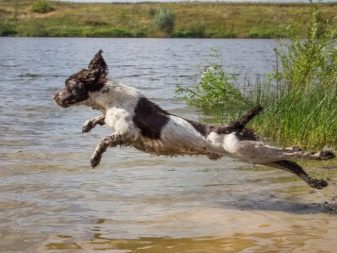
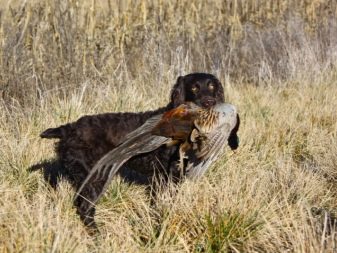
After many hours of swimming in icy water or overcoming reed thickets, the pet's strength can be undermined. Therefore, experienced hunters in the fall do not abuse the spaniel's abilities. They tie them in dry places and are allowed to enter the water only for serving. This breed is best suited for chasing quails, upland birds and woodcocks.
If we are not limited only to hunting behavior, then we must also point out that for such dogs, physical contact with the owner is especially valuable... Yet even attachment to humans is not the main passion of spaniels. They love hunting more than anything else. When preparations begin for her, the dog will carefully monitor all activities. The pet begins to rush, get tangled underfoot, and tired, will wait at the exit, so that it is definitely not forgotten.
On the way, all items used for hunting are guarded by the dog jealously, sometimes even aggressively.
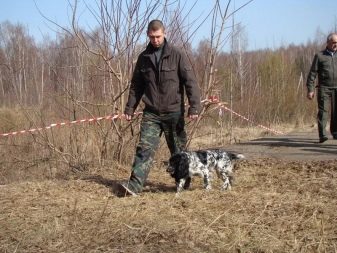
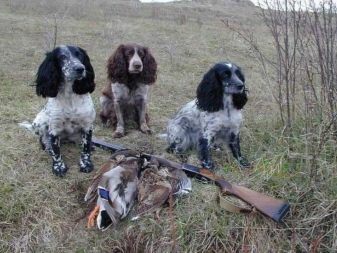
Advantages and disadvantages
Such a dog becomes an excellent companion for those who like to walk for a long time in parks and forests. Like all spaniels, it swims well and is therefore appreciated by waterfowl hunters. Her attitude towards the children of the owners is quite tolerant, the dog willingly plays with them. In relation to "stranger" children, the manifestation of aggression is likely.
It is easy to train the Russian hunting spaniel, as it masters commands without any problems. Praise from the owner is enough to motivate the dog to fulfill the previously worked out orders. A serious problem is lack of natural satiety... It is therefore unreasonable to be guided by the appetite of an animal. It is required to strictly monitor the consumed portions and allocate time for exercise.
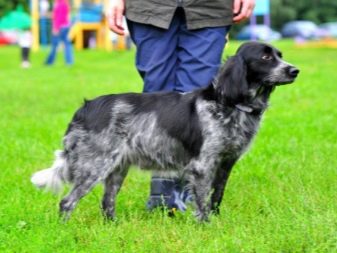

Walking with a Russian hunting spaniel will have to be strictly using a leash or muzzle.
If this is not done, then the dog will chaotically eat all the waste it encounters and even plants. She will not disdain even garbage. High activity can also be a source of problems. You should not let your pet go for a walk unattended, and it is also highly desirable to teach him not to cross roads, not to go to dangerous places. With these guidelines, almost all problems can be avoided.
Russian hunting spaniels are relatively small and can be kept in almost any apartment. When going hunting, many carry such a dog in backpacks. Pets tolerate such transportation well.
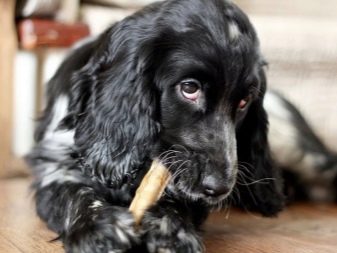
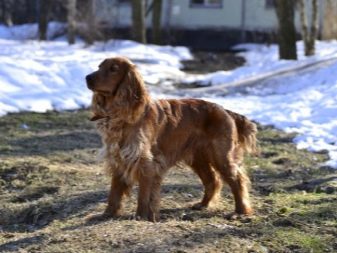
It is very important for them to swim more often, because it is:
- increases overall tone and immunity;
- stabilizes the nervous system;
- strengthens the respiratory system;
- helps to improve the motor skills of the limbs.
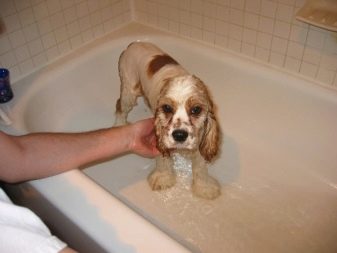
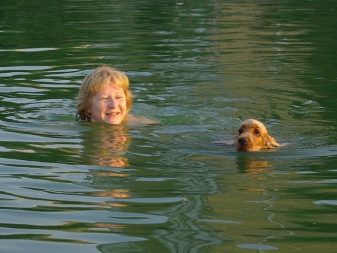
ROS tends to chew actively. He tries literally everything he can find in the house and on the street. But the dog is notable for complaisance and is strongly attached to the owners. Problems can arise if other people's cats get into the house or yard: then the spaniel, at the behest of instinct, will drive them away.
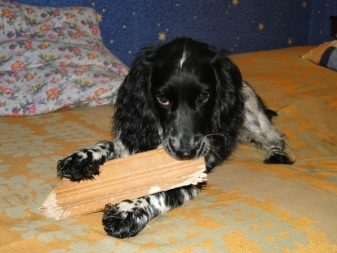
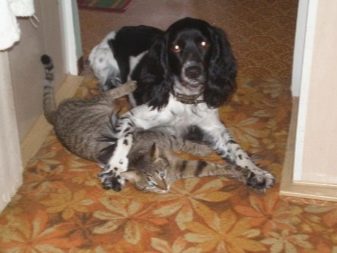
You will have to educate and train the dog yourself, since it can obey only one person.
Conditions of detention
Russian hunting spaniels should be combed at least once a week. To do this, use metal combs. Regular brushing helps to avoid tangles and unkempt looks. Work with wool is carried out from head to tail, moving the comb along the course of hair growth. Spraying with a weak vinegar or unsaturated citric acid solution helps to simplify the matter.
Usually, 30 ml of citric or acetic acid is added to 1 liter of hot water. Then all this is mixed and cooled to 40 degrees. If there is no special balm, the same solution is useful for rinsing wool after bathing. The puppies will need to be brushed with a natural hair brush. The metal prongs can damage their thin, sensitive skin.
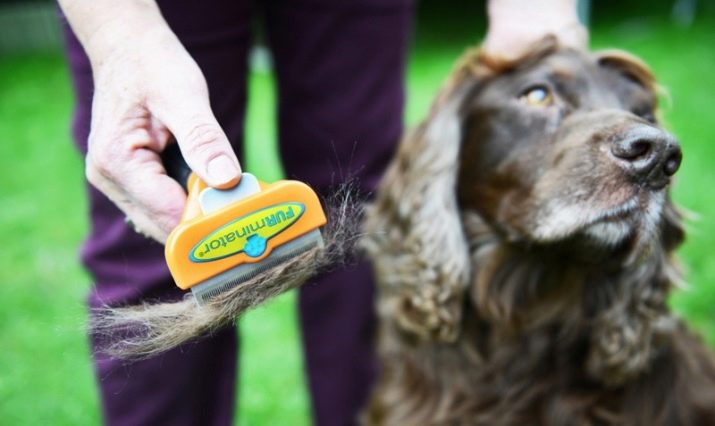
Bathing occurs as soon as it gets dirty or once or twice a month. You can buy special shampoos at any pet store. When choosing them, you need to focus on the type of wool. Dry skin can be recognized by increased itching and dandruff. If the shampoo dries out the skin, you need to change it right away. After bathing at home, you can still treat the wool with balms or cosmetic oils.
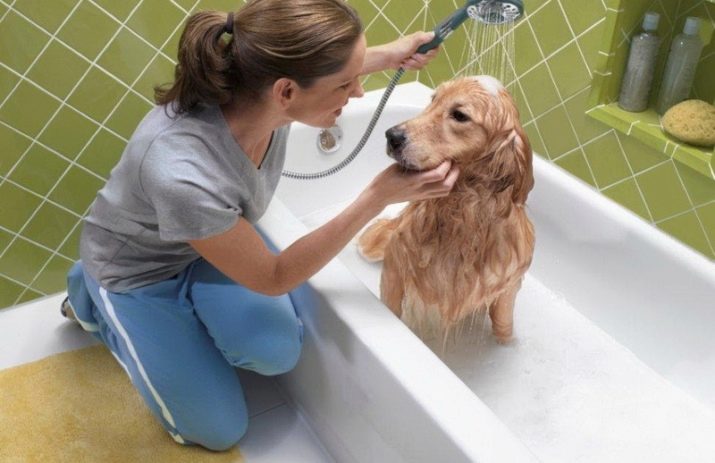
The first haircut in a spaniel's life should be done at about 3 months. They are guided by the rate of hair growth. A full haircut (the so-called grooming) is done in 2-3 months. For hygienic purposes, dogs are sheared every 12-14 days. At the same time, the grown hair on the paws and around the ears is removed.
Back trimming is not allowed. Around 8 months old, the puppy fluff will start to peel away, and then the hair on the back will look as if it is not well-groomed. A comb with shortened teeth comes to the rescue, effectively removing fluff. Combing is carried out daily.

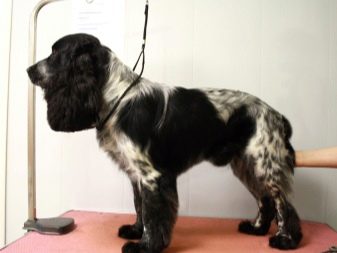
If you shave off a randomly growing wool, then it will then not grow back smoothly and evenly. It will bulge on its back all the time, which is extremely bad for exhibition specimens.
It is not difficult for a dog to air the ears: they are flapped, as if by wings, for several minutes in a row. The dogs kept in the apartment can be clipped more than once every 30 days, as usual, but a little less often. In any case, it is necessary to control so that the claws do not lengthen excessively and do not twist. Violation of this requirement results in lameness.
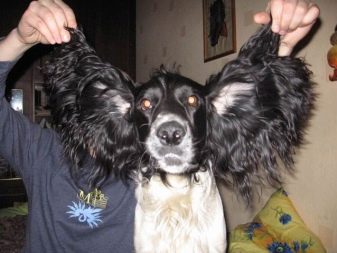
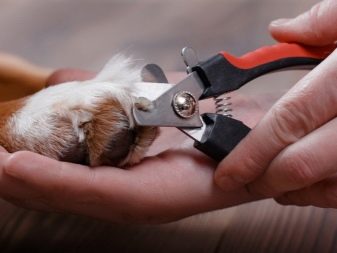
The Russian hunting spaniel needs monthly treatment with parasite protection. The best drugs of this kind are Front Line and Advantix. After applying the composition to the withers, you cannot bathe the animal for 10 days. High activity and hunting instincts increase the danger of tick attacks.
Returning from a hunt or even just from a walk, you should definitely inspect the spaniel. As soon as a tick is found, it must be removed immediately, but carefully. The bitten place is disinfected.
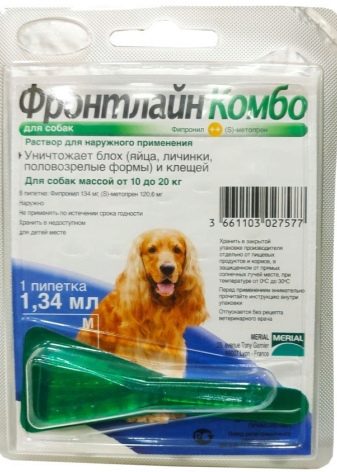
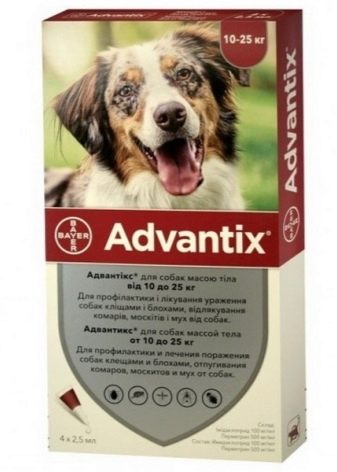
If the dog's condition does not worsen over the next few days, there is no cause for alarm. But the appearance of lethargy, loss of appetite and especially a rise in temperature should immediately alert dog breeders.
What and how to feed correctly?
Particular attention should be paid to proper feeding of the Russian hunting spaniel. In childhood, animals are given food 4-5 times a day every 3 hours. After a year, the number of meals is reduced to 2 times a day. Adult spaniels should be fed in the mornings and evenings. But in any case, you need to take care of a balanced diet that meets the basic needs of the animal.
The most important part of the spaniel's diet is clean water. It must be available at all times. The bowls must be kept clean and free from food debris. They must be washed strictly in hot water.
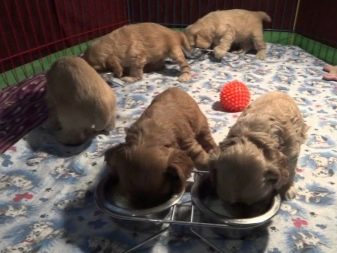
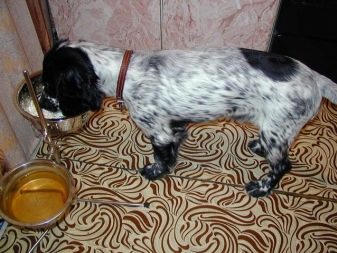
Must be included in the diet of spaniels:
- lean meats;
- liver and offal (heart, spleen);
- meat and bone meal;
- heads;
- mesentery;
- sea fish (deboned);
- seasonal fruits and a variety of vegetables;
- meat cartilage;
- stomachs;
- crackers or stale bread.
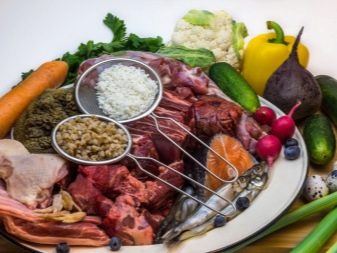
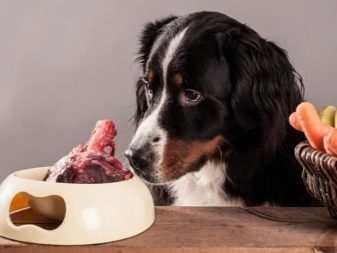
It is also worth using the udder, oatmeal, rice and buckwheat groats, wings and legs of birds, low-fat cottage cheese, kefir.
There are also a number of foods that are unacceptable for the Russian spaniel. These are all sorts of fatty meats, sweets and pastries, smoked products and spices. The ban also includes river fish, legumes (provoking gas formation), baked goods, and chocolate. At a young age, the dog should be given meat only in the form of scalded minced meat.
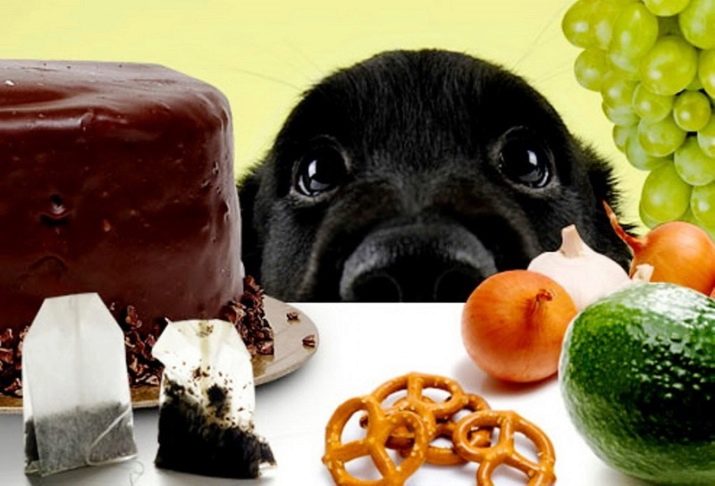
As soon as the milk teeth change to permanent ones (usually at 7 or 8 months), you can switch to cutting meat food into small pieces. Waste from the processing of intestines and stomachs should be given only boiled. This allows you to minimize the risk of infection of the dog with harmful microorganisms. In addition, cooked food, unlike game, will not tear and wrinkle. Spaniels are given all food only fresh, neither too cold nor too hot (ideally at room temperature).
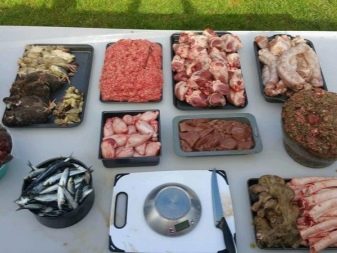
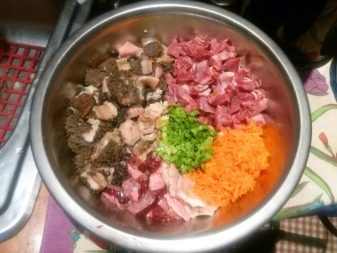
Health and longevity
In addition to being overweight and food allergic, dogs can be at risk of:
- otitis media;
- leptospirosis;
- ringworm;
- piroplasmosis;
- toxoplasmosis;
- demodicosis;
- sarcoptic mange (aka itchy scabies).
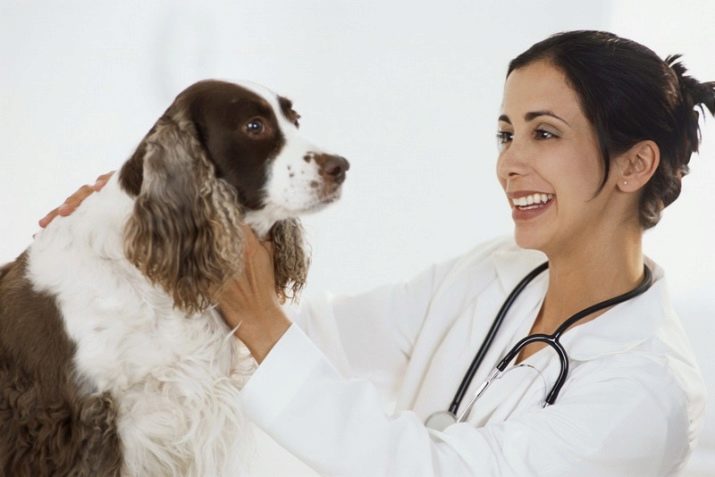
Problems can be associated with the dog's eyes. After a night's sleep, you must immediately remove accumulated mucus from them. To do this, use a linen cloth or a clean cotton swab. When raising a spaniel, you will have to develop a habit of tolerating brushing your teeth. Tartar can be removed by soaking cotton swabs in hydrogen peroxide.
Too frequent or unnecessarily intense molt will be a cause for alarm. Normally, it happens every six months.Compared to other hunting dogs, Russian spaniels turn out to be true long-livers. Their average life span is 15 years. There are many known cases when, with good care, animals lived up to 20 years.

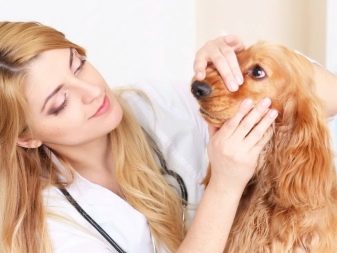
To ensure the spaniel's life is as long as possible, the information on its ancestors must be carefully checked. If they were sick for a long time and often, this is a very bad sign. Every six months, the pet must be taken to the veterinarian for a preventive examination. Elderly dogs often suffer from liver problems. Spaniel health also depends on:
- lack of drafts near his place;
- maintaining physical fitness;
- systematic walking;
- prevention of injuries;
- annual comprehensive vaccination;
- attention from the owners (lack of attention leads to severe stress).

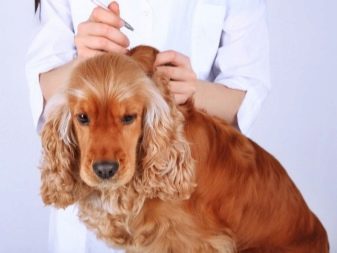
Education and training
Since Russian hunting spaniels are hunters by nature, we must abandon the idea of using them simply as toys for children. Like other dogs they build actions based on unconditioned and conditioned reflexes. When teaching animals, it is imperative to apply the reward method. It can take the form of giving out delicacies, affectionate patting, or verbal approval. Sometimes you have to resort to punishment.
You shouldn't scold your spaniel too much. If the dog becomes afraid of the owners, it will only ruin the whole business. Only as a last resort can physical punishment be used. In less serious situations, oral reprimands are used. Experienced owners try to use both options (punishment and reward) in combination.
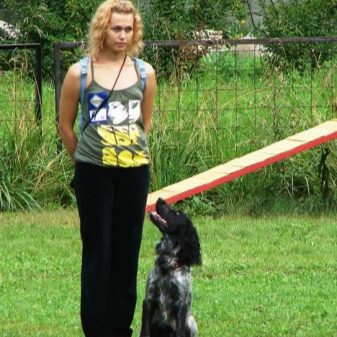

From the first days puppies should clearly understand that their owners are leaders in the "pack". But only a friendly relationship with a pet allows you to effectively train it. A good idea of the owner should be developed in the first six months of the dog's life. Having a dog at a later age, you cannot count on the same strong affection.
However, the animal will still be loyal and well-obedient to its owners. Raising a hunting spaniel is time consuming. If it is not possible to allocate at least 2 hours a day to work with a pet, then you should completely abandon its purchase. From the very beginning, you need to give him a nickname, which will be pronounced in front of other commands. But a nickname cannot be used as a substitute for the command "Come to me!"
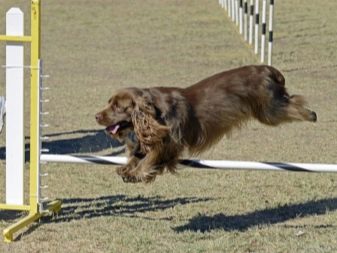
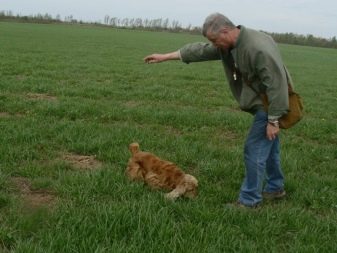
One of the first orders to learn is "Place." It is often duplicated by patting the bedding. Then the pet will quickly understand what is required of him. Later, the command is given simply by voice without additional movements. Maximum attention should be paid to developing a reaction to commands:
- "It is forbidden";
- "Stop";
- "Sit";
- "Bring";
- "To me";
- "Seek."
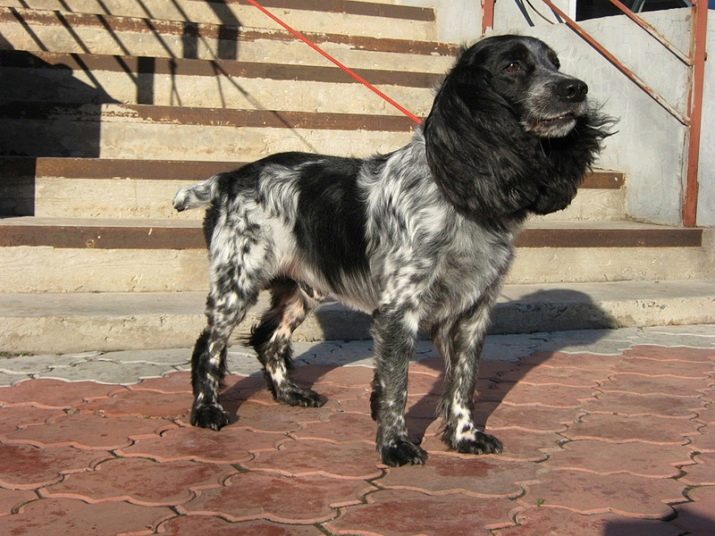
Ban commands work out near the dishes with food. The necessary words are pronounced several times in a row for 5-30 seconds, while holding the dog by the head at a distance from the food. Another approach is as follows: they bring the pet to the feeding trough and prevent it from reaching it on the command "no". If disobedience occurs, the puppy is lightly spanked with a whip. It is undesirable to strengthen the blow too much.
The next step is to ensure that the command is executed. without physical coercion. The prohibition must be worked out from the very beginning not only on food, but also on other undesirable actions. For example, stopping attempts to chase pets or birds unnecessarily. The Sit command is practiced by rewarding food for each successful completion. Consistently seek to increase the distance between the owner and the dog, at which it will obey.
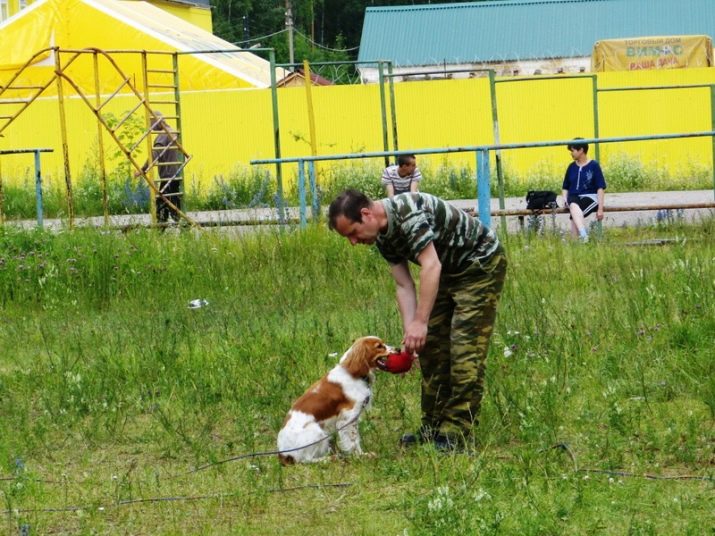
The taste-encouraging method of training has become quite widespread. If you need to develop the correct reaction to the command “to me” in this way, they act like this:
- give the required command (this is an irritant);
- demonstrate food;
- after completing the order, they give it to the pet.
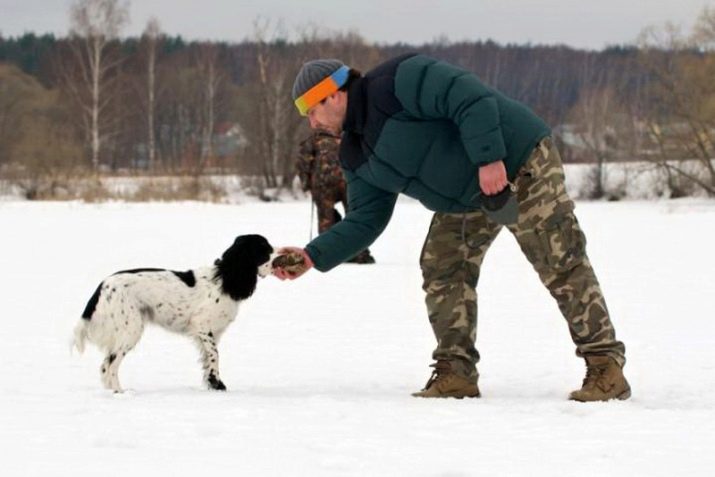
Mechanical skill development involves applying pressure to the croup of the spaniel. It must stop immediately after executing the order. In both cases (with gustatory and mechanical methods) it is necessary to achieve the performance of actions on a verbal command. In a Russian hunting spaniel, it is possible to work out by a mechanical method only actions on the command "no". Contrast training is considered the most effective method of action.
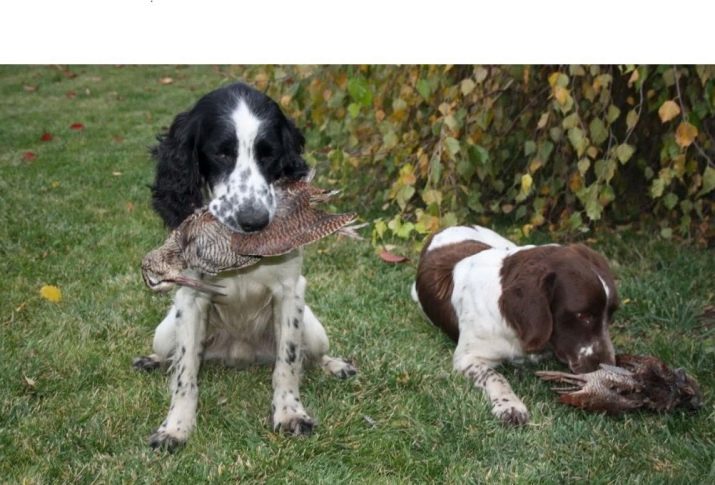
It consists in using an unconditioned mechanical stimulus as motivation, and then in reinforcing motivation with an unconditioned food stimulus... If it is necessary to train the dog to approach on command, then it is accompanied by pulling up on the leash. When the animal begins to approach the owner on its own, its success is rewarded with a small piece of food. It has been proven that the combined use of two opposite unconditioned stimuli accelerates the development of the necessary skill. In addition, the contrast technique gives the most durable and stable results.
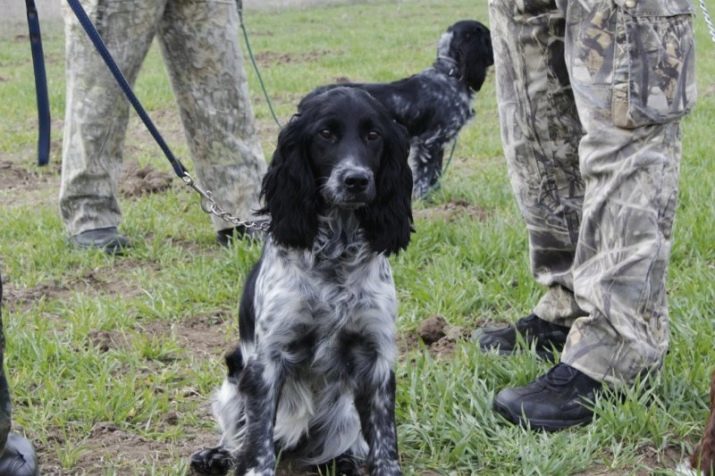
To guarantee success, you need to use immutable signals. Even a slight change leads to the fact that the command or other signal will be perceived as a new stimulus. All orders must consist of a strictly specified combination of sounds. They must be pronounced with a well-pronounced intonation. This intonation is determined by the emotion that needs to be conveyed to the pet.
Using physical stimuli, one must always dose the effect. The older, stronger and larger the dog, the more intense the stimulus should be. If he is too weak, the spaniel will not obey. If he turns out to be prohibitively strong, then instead of increasing motivation, it may disappear. In the worst case, the animal will simply show aggression. In any case, the conditioned stimulus should appear before the unconditioned one, and not after it.
A serious mistake is often being late with an unconditioned irritant. If it is applied some time after the signal is given, then the development of the required skill takes longer, and then the reaction to the command will be slowed down. It is required to avoid excessive rudeness during training, because because of it the dog ceases to trust the owners and begins to be afraid of him. Excessive affectionateness and playful handling are also contraindicated, because they sharply reduce the controllability of the animal, which can cause many problems on the hunt.
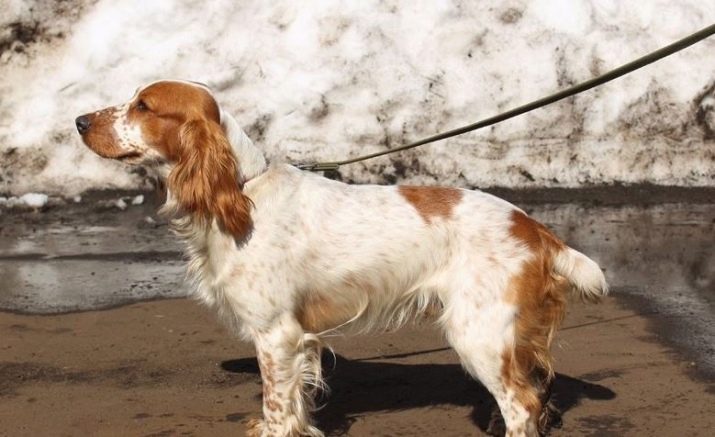
Differences from similar breeds
The very name "spaniel" directly indicates that this breed originated in Spain. She was later taken to the UK. In the past, they were divided into only two groups: those who hunt in the water and on the ground. The classification by country of origin now prevails. Depending on them, characteristic features are highlighted. English Cocker Spaniel is different considerable mobility and very hardy. His physique is dense and muscular, his head arches in front and has a slight flattening.
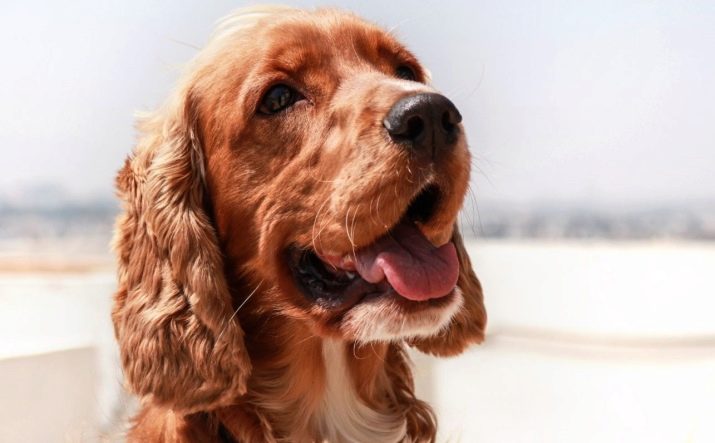
A typical feature of the British breed is clever expression in the gaze... The Yankee was developed from the English branch. As a result of selection work, a relatively modest in size, beautiful dog with the correct proportions has turned out.
The skull of the "American" is close to a round shape, the animal is covered with long silky hair. The Russian hunting spaniel is slightly taller than the English and American types. Extra long legs make it easy to gallop over difficult to reach areas. The light head has small bulges on the sides. The skull is almost rectangular. Unlike foreign analogues, the Russian breed is able to hunt not only ducks, but also hares.
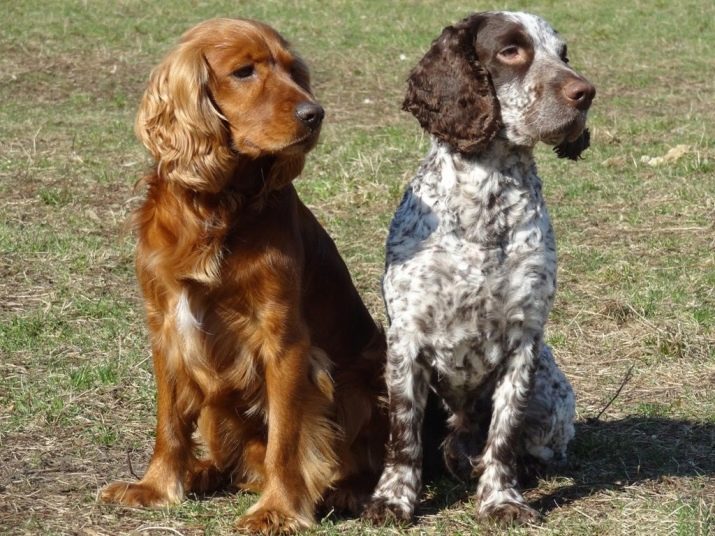
How to choose a puppy?
General information about the properties of the breed is certainly very important. But in order to make the right choice, you still need to carefully think over all the nuances. Once again, we recall that such dogs are intended for hunting, and not for decorative content in the room. When planning to participate in exhibitions, you need to acquire not mestizos, but purebred individuals. The age of the animal is of particular importance.
It makes little sense to acquire spaniels under 6 weeks of age. But too old copies are not too good. With very early separation from the mother, there is a high probability of weakening the body and undermining the puppy's immunity. At the same time, such an act of breeders leads to the deprivation of the pet of the necessary social skills. They either do not appear at all, or are produced very poorly.

When buying a spaniel for the first time, it is imperative to involve specialists for help. Only they will be able to draw the correct conclusions from the pedigree and recommend the best animal. It is useful to get advice from the nearest cynological clubs. When you get to know the pedigree on your own, you need to look at the photos of the animal's parents. Ideally, they are examined in person.
It is a bad idea to buy the smallest puppies in a litter. Despite their visual appeal, it is they who most often suffer from developmental defects. It is imperative to request a written certificate indicating vaccinations and the facts of treatment for parasites. In Russian hunting spaniels, tail and dewclaws are docked for 5-6 days of life. At the time of purchase, wounds in such places should be completely healed.
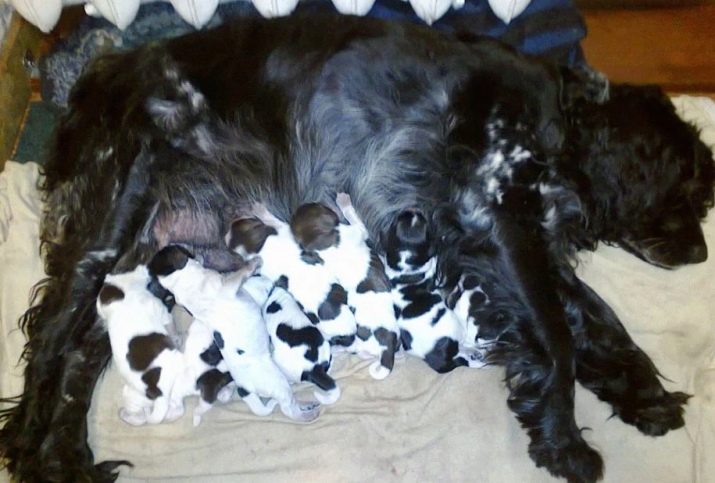
If this is not the case, pet anxiety can interfere with developing a positive attitude towards the owner. You should definitely ask breeders how they fed the puppies, how much milk they gave, what the diet was, and so on. The slightest hesitation in answering these questions will show that something is wrong. If it is impossible to contact the breeders, you should use the services of pet stores.
Buying pets from private individuals is not recommended because they too often sell mestizos under the guise of purebred dogs.
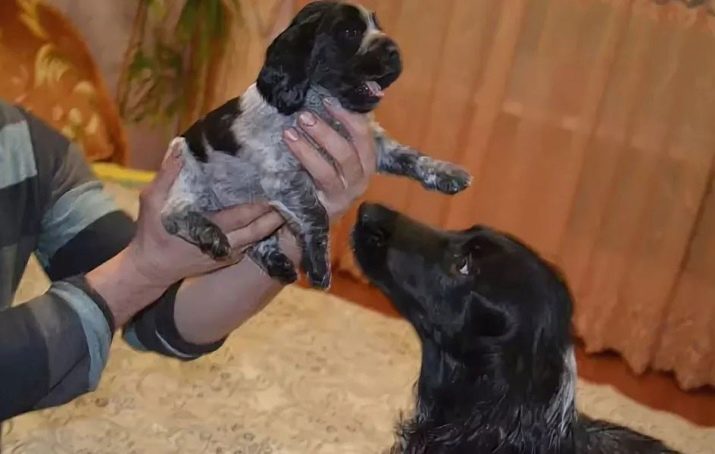
Outwardly healthy puppies are distinguished by symmetrical development and strong muscles. The presence of scars and growths on the paw pads is unacceptable. Animals with redness on the skin and with impaired pigmentation must also not be acquired.... You can transfer money and sign an agreement only after the transfer of all accompanying documents. If it will be impossible to carefully educate the puppy, take the animal at the age of 6 to 10 months, but no more.
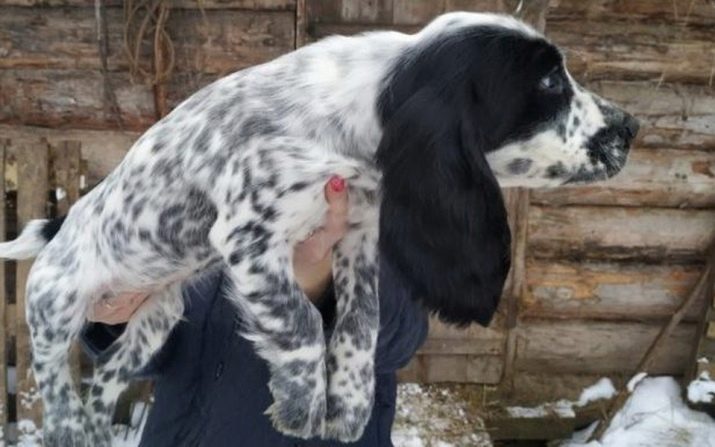
Suitable nicknames
The correct name for the spaniel is also important. Choosing him is not an easy task. Since you will need to communicate with the dog often, the nickname should be chosen especially carefully. Some owners prefer it to symbolize some of the qualities of the animal for them. Others are simply guided by beautiful sound. Nicknames are popular for boys:
- Sancho;
- Volume;
- Nile;
- Mars;
- Casper;
- Sema;
- Tisha;
- Max;
- Louis;
- Timosha;
- Bruno;
- Kiwi;
- Adam;
- Zeus;
- Phoenix.
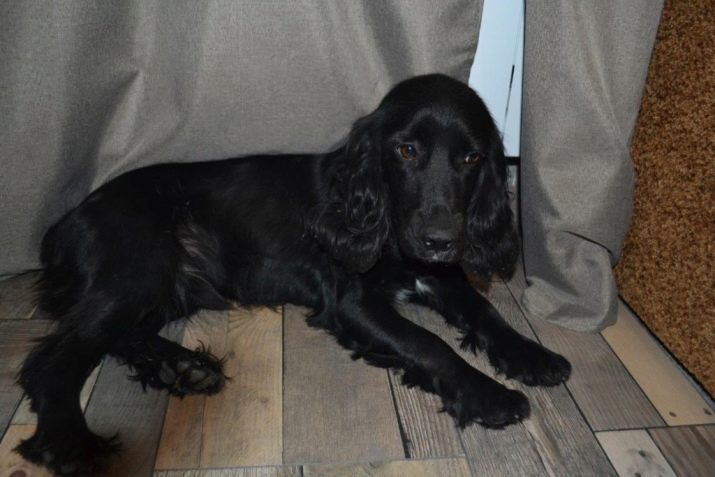
As it is easy to see, names of foreign origin prevail. Their total number is so large that it will not be difficult to find the optimal nickname.
Those who love to stand out will definitely pay attention to the names Shaman, Ramses, The Hobbit, Scout, Muscat, Rosinant, Cactus, Bar. Some also use nicknames with meaning, borrowed from the Japanese language. Among them are Shinju (pearls), Hiro (generous), Daichi (wise), Arata (new), Daisuke (great help).
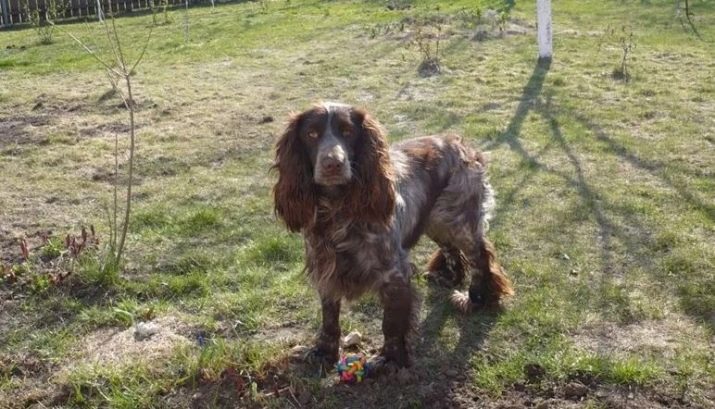
Nicknames for girls are recommended to be selected individually. The main criteria can be the appearance of the animal, its character. Others use foreign names. The final decision depends on the wishes of the owners themselves. Such options as Sarah and Nessie, Tina and Laura, Lana, Businka (Busya), Dora, Toffee, Camomile, Carmen, Mary are popular. Lovers of pretty nicknames should think about options such as:
- Athena;
- Kira;
- Linda;
- Sabina;
- Fox;
- Juno;
- Umka;
- Sprat;
- Bagheera;
- Margot;
- Alice;
- Sonya.
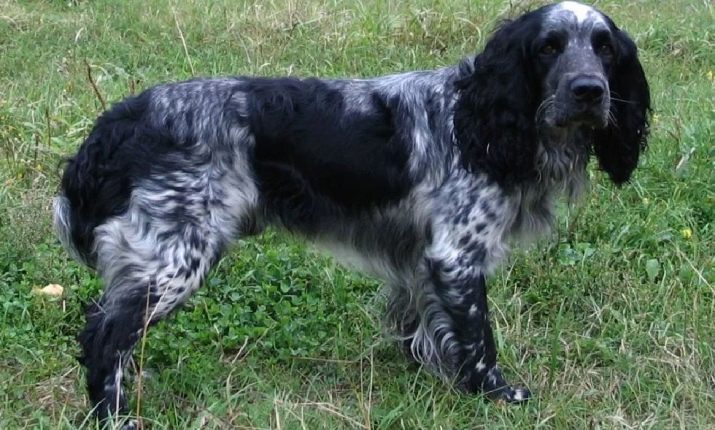
But it is necessary to be guided not only by the popularity of certain dog names.It is also important to take into account the basic requirements when selecting them. You should only use words that contain a minimum of syllables. The fewer there are, the sooner the nickname will be learned. Since she should just say it out as easy as possible, it is necessary to abandon the use of the letters C, K, W, G, T, P. But the letters (sounds) H, L, R, H, B, D, V are even recommended.
Repetition of some human names in a nickname is undesirable. If they are used, then only rare or little used in our country. Otherwise, you can face very unpleasant situations on the street. The name should be chosen for the dog so that it creates associations with some pleasant things.
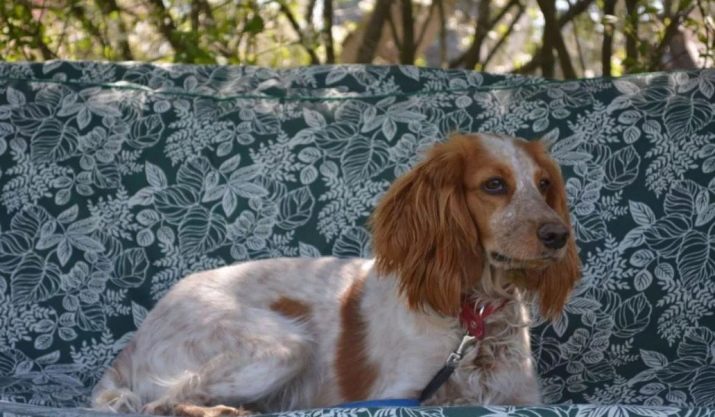
Reviews
It is useful to study the comments of the owners of Russian hunting spaniels. Such dogs are not suitable for housing. However, they are appreciated as loyal friends and reliable protectors. It is mentioned that the pet can easily find any item hidden in the house. Skillful owners can teach the dog a variety of tricks and tricks. Problems can be caused by buying an adult dog. There are references to specimens characterized by rigidity, resentment and rancor.
The attitude of a spaniel towards different family members can vary greatly. Overly aggressive individuals can learn many commands, but they will execute them, as it were, against their will. At the same time, the only thing the dog wants is for people to stop paying attention to it as soon as possible.
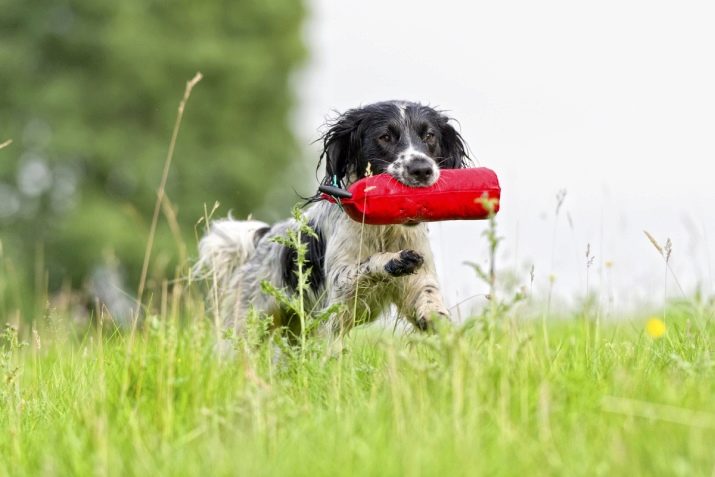
Even the most "angry" individuals can be loyal and loyal friends. Those people who knew how to find the "key to the heart" of an animal speak about this.
The intellectual abilities of the Russian hunting spaniel are very high. Of the negative properties, frequent nibbling of everyone who gets in the way is noted. And any objects (even cabinet furniture) can be damaged. In the reviews it is noted that Russian hunting spaniels do not tolerate feeding with flour food, corn. When cooking cereals, they lay as much meat as possible in them. Particularly cautious is advised to approach the organization of the diet of sterilized animals.
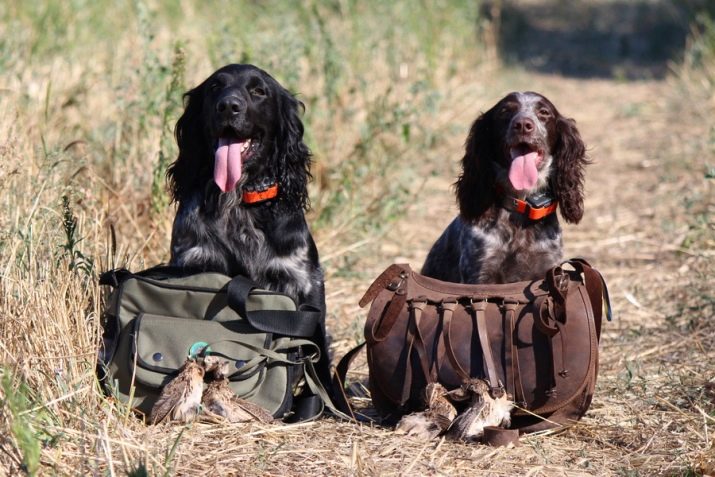
Experienced owners also recommend that you do not be too strict about felting your dog in the mud (at least occasionally). This will give the pet extraordinary pleasure, which covers all the costs of such actions. And the difficulties in washing an animal are greatly exaggerated.
The liveliness of spaniels is really at a high level - there are cases when they found close contact with smaller dogs and even with cats in the house. When starting such a dog, one must initially be prepared for the appearance of a large amount of wool in the house. Small spaniels are prone to leprosy and if such an individual is caught, then a positive reeducation result will be achieved only by 3 years.
The rest of the training goes without problems: you can already train your spaniel to perform basic commands by 6 months.
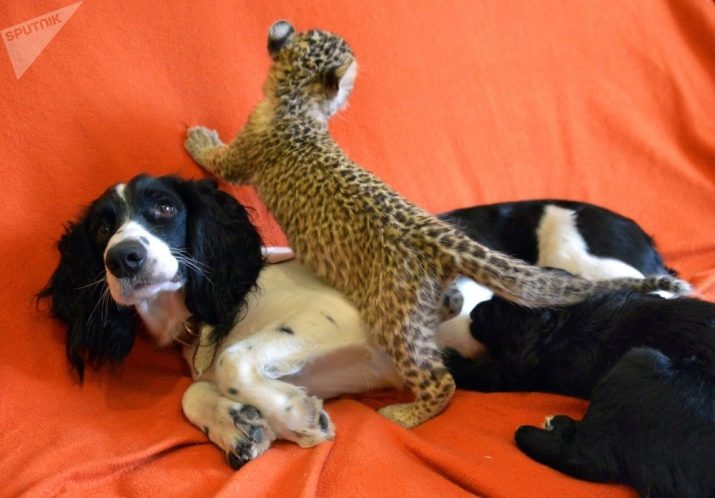
For information on how to properly tame a Russian hunting spaniel, see the next video.






































